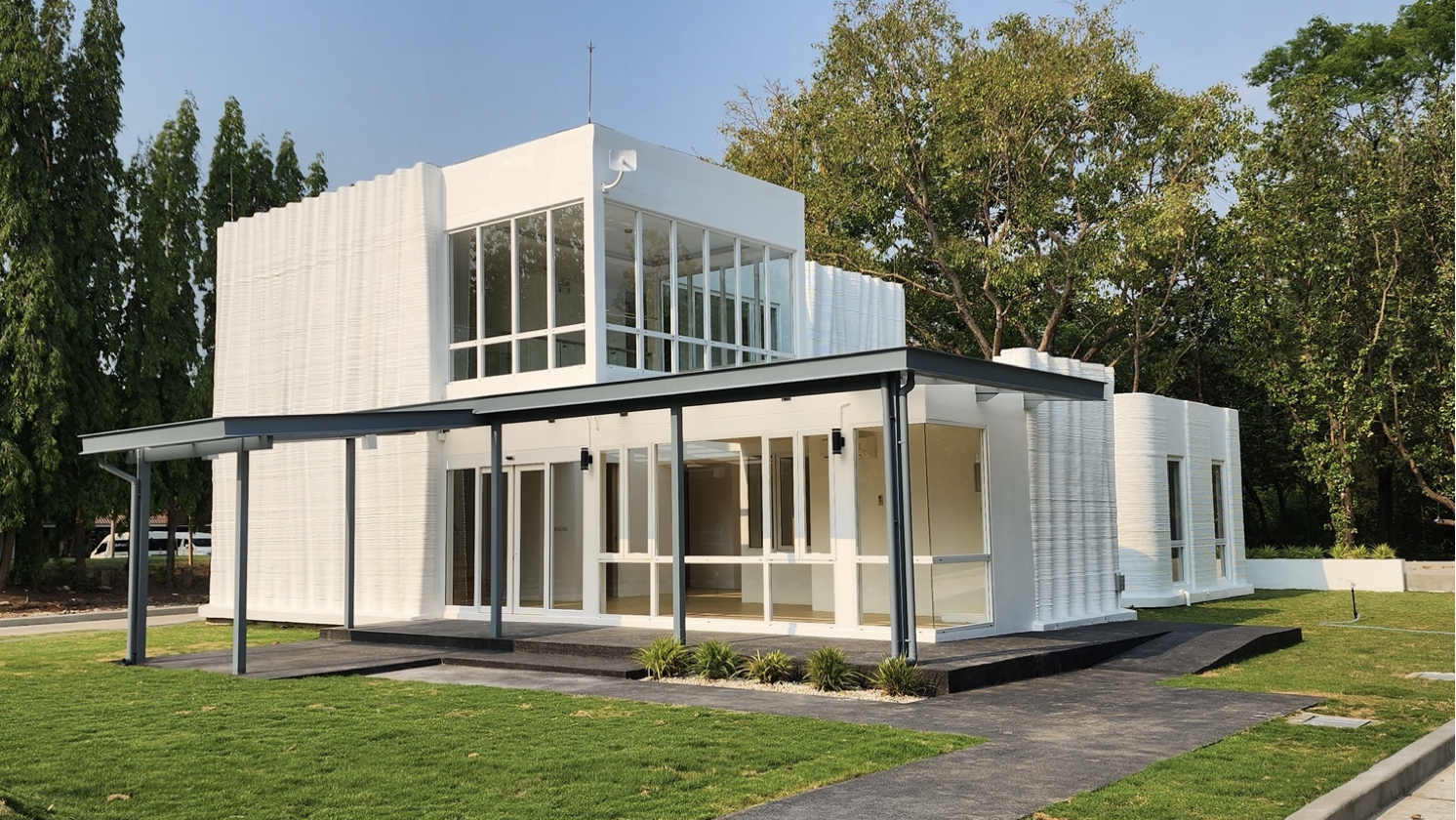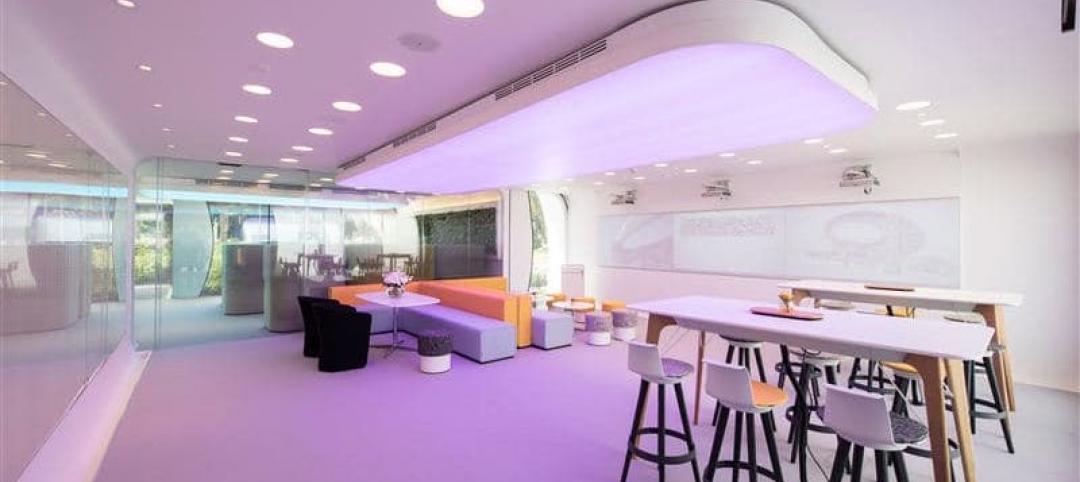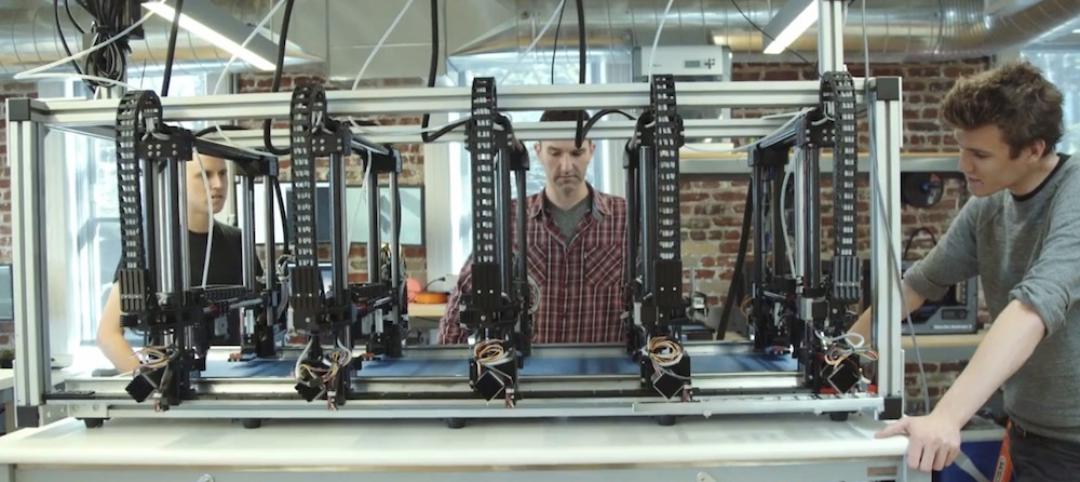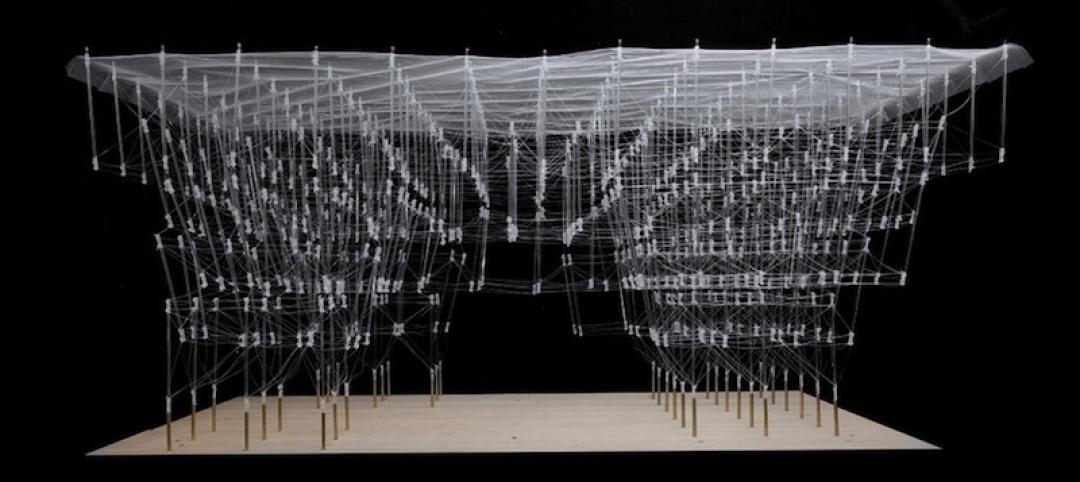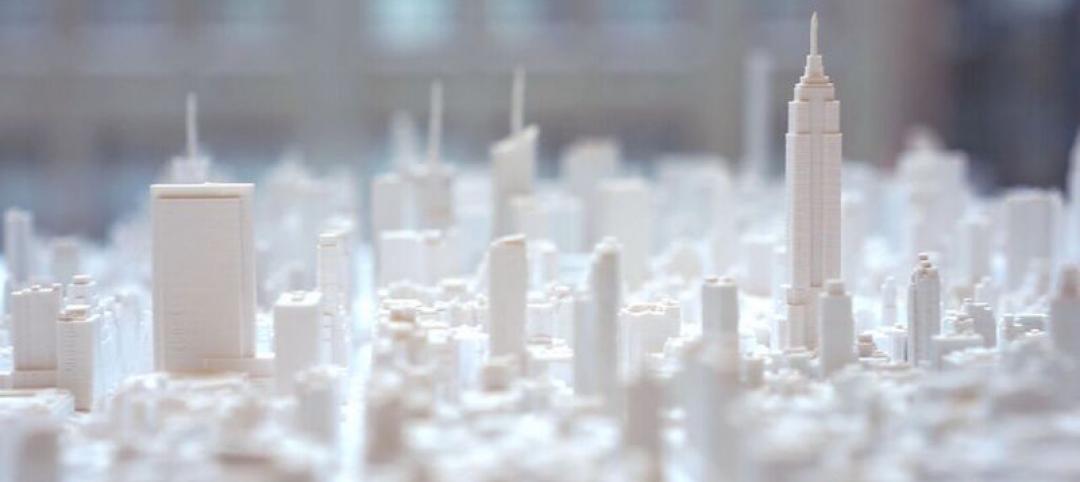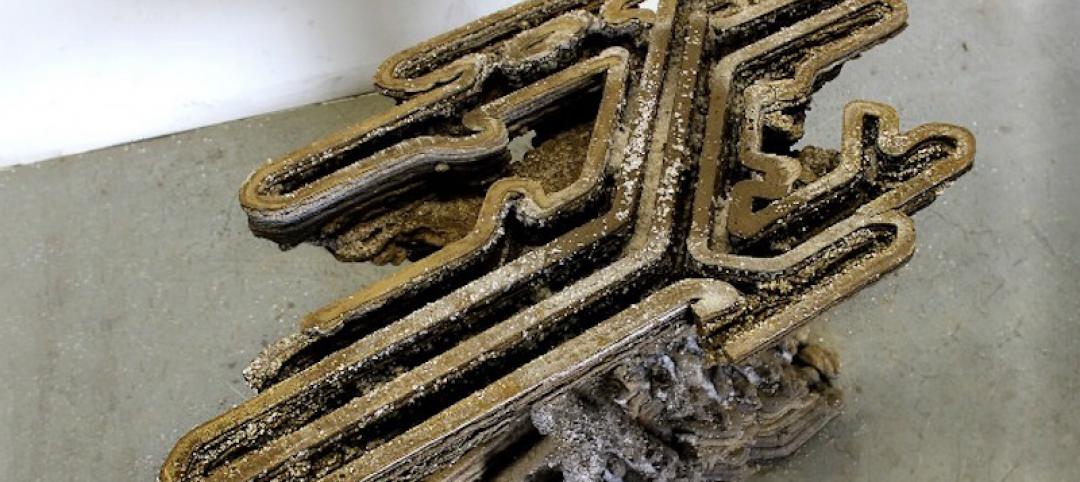3D construction printing reached new heights this week as the world’s first 3D-printed medical center was completed in Thailand. Often associated with residential homebuilding, 3D construction printing (3DCP) is an industry innovation that aims to build homes faster, cheaper, and stronger.
The recently finished medical center in Saraburi, Thailand, spans 3,712 sf and is two stories tall—the first two story 3D-printed building in the ASEAN countries. The medical center was built by Siam Cement Group (SCG), the largest and the oldest cement and building material company in Thailand and Southeast Asia.
Building the world’s first 3D-printed medical center
Using a BOD2 3D concrete printer from COBOD, the medical center bears a familiar wavy-wall design often seen in many 3D-printed structures. This building was specifically designed to support seismic loads as well. Due to the method of 3DCP, SCG was able to build the center at an increased speed with less labor required compared to conventional building methods.
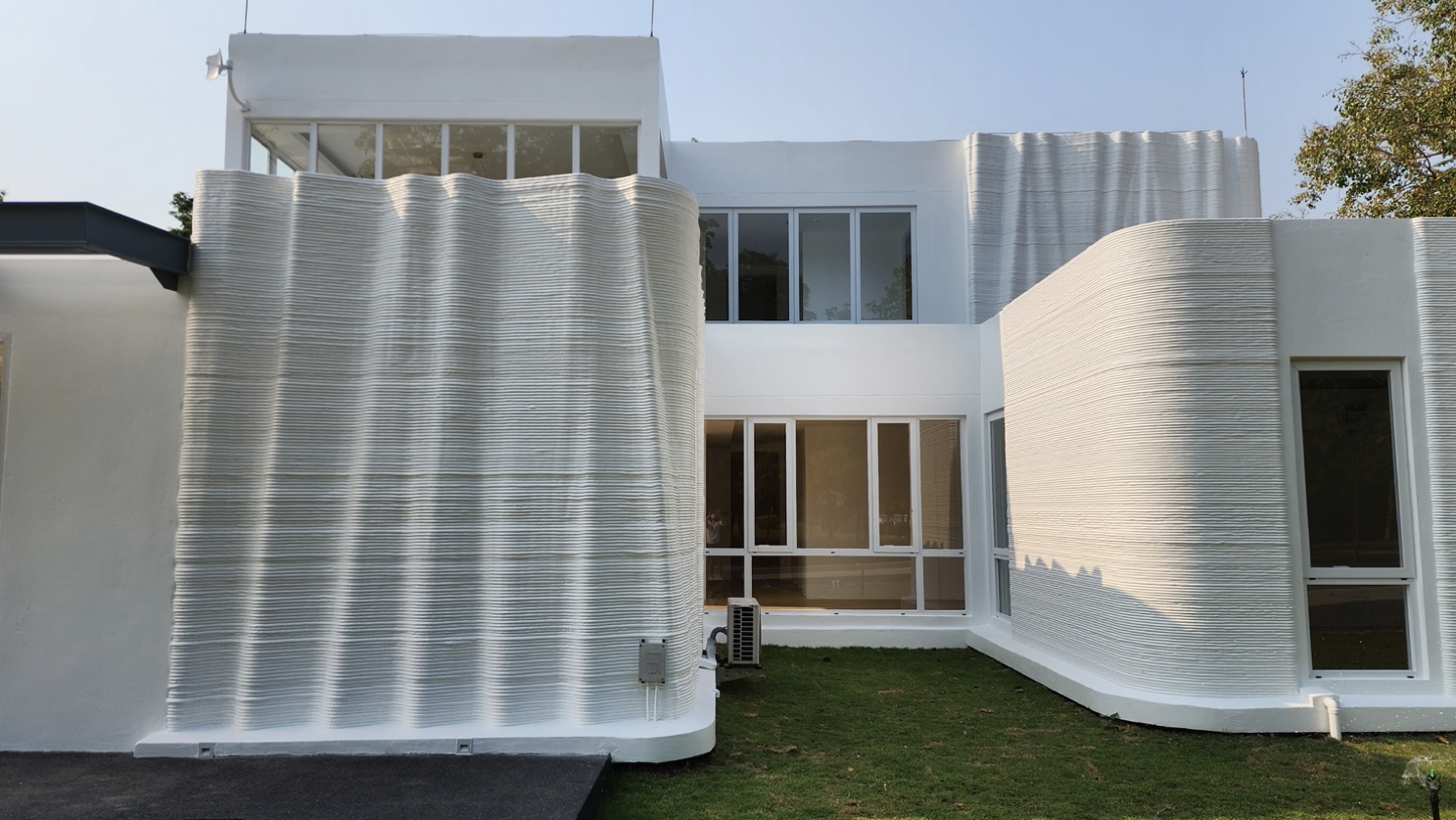
The success of the Saraburi medical center was supported by SCG’s collaborative studies with Thailand universities. Chalermwut Snguanyat, 3D Printing and Fabric Concrete Technology Director from SCG, notes that the design of the 3D-printed medical center was approved by a senior professional engineer, and the materials used were SCG printing mortars with strength classes of C75/80 and C30/35 for load-bearing and non-load-bearing walls, respectively.
According to SCG, the building’s freeform design stands out for “only being possible due to the use of 3D construction printing.”
As an official distributor of COBOD in Thailand, SCG aims to continue increasing construction efficiencies, improving design, and reducing the environmental footprint by generating less waste on the construction site.
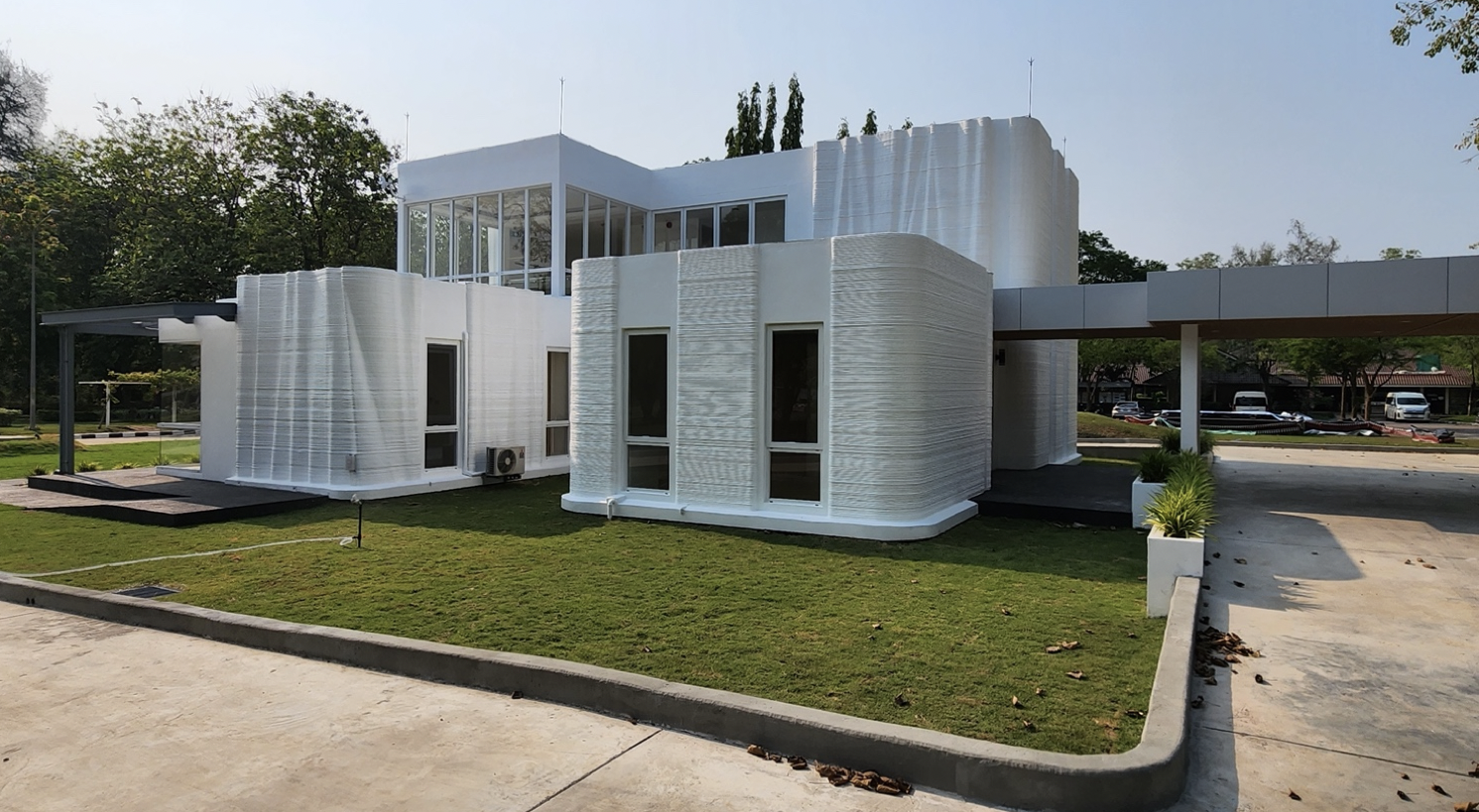
RELATED:
- 3D printing for construction advances in Germany
- Montana becomes first U.S. state to approve 3D printing in construction
- Will 3D printing be an answer for building more affordable homes?
Related Stories
3D Printing | May 26, 2016
Dubai opens world’s first 3D-printed office
The 2,690-sf structure took 17 days to print. City officials say the labor cost was only half as much as similar size conventional buildings.
3D Printing | Mar 29, 2016
Autodesk’s Project Escher prints large objects in fraction of the time
By networking 3D printers and divvying up the work, the project creates big items 80% to 90% more efficiently.
3D Printing | Feb 23, 2016
University of Tokyo students develop 3D-printing pen
The pen, which melts and strings together plastic filaments, can be used to make large-scale temporary structures.
3D Printing | Feb 11, 2016
Microscape mini 3D models give you the whole city in your hands
Starting with Manhattan, the company hopes to expand to other cities, villages, and "suburban cul-de-sacs" with its detailed, 3D models.
3D Printing | Jan 25, 2016
Architecture students create new method for 3D printing concrete
The team's Fossilized project allows for structures that are more varied and volumetric than other forms so far achieved.


